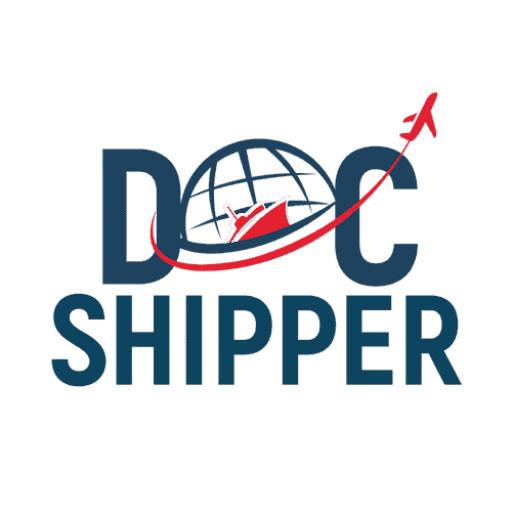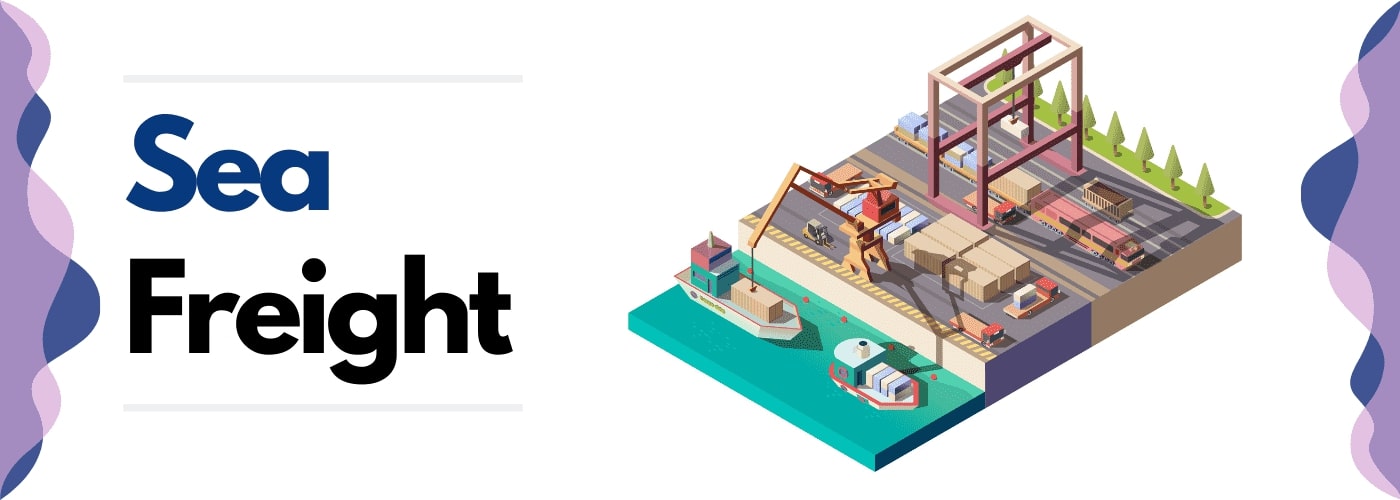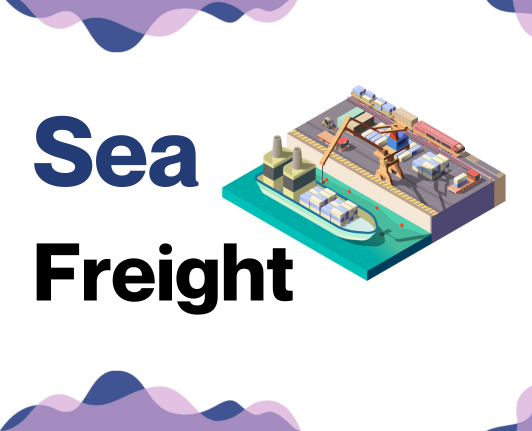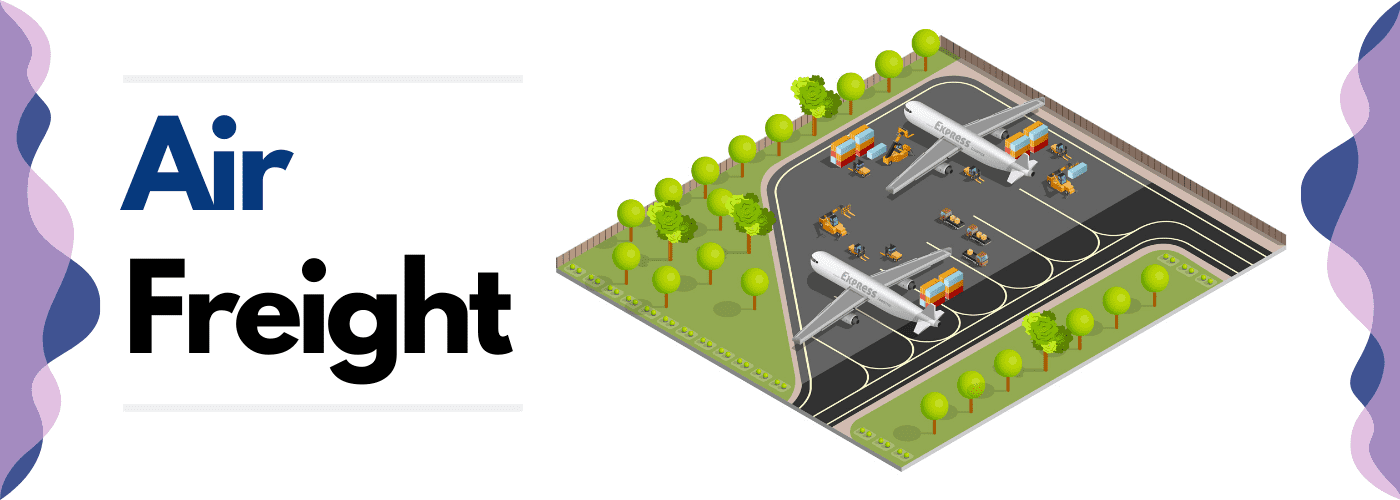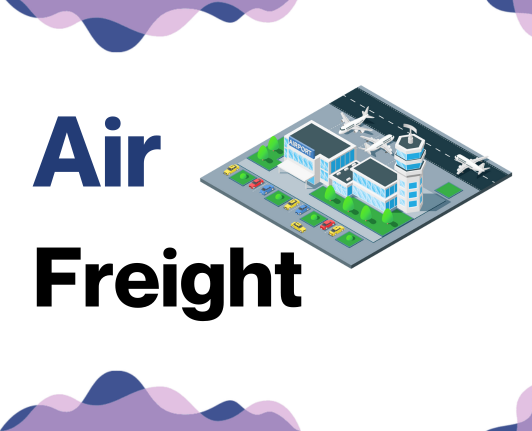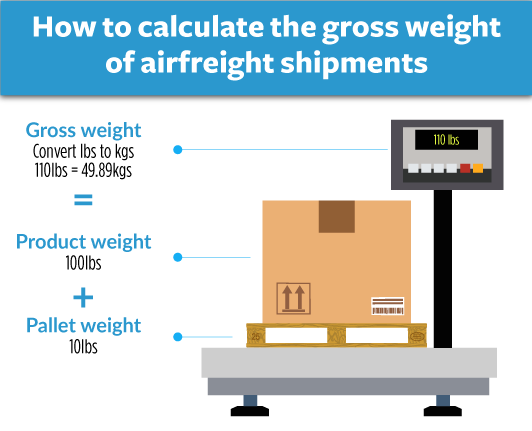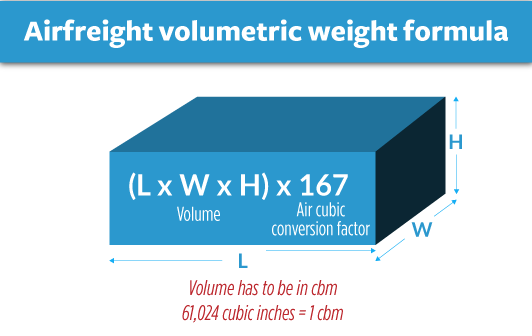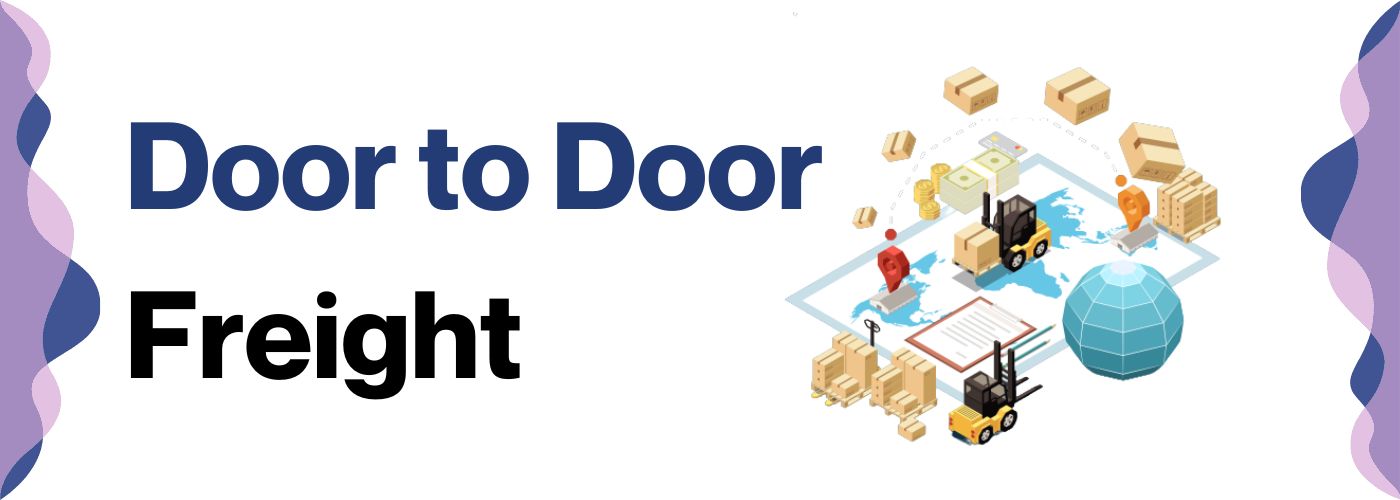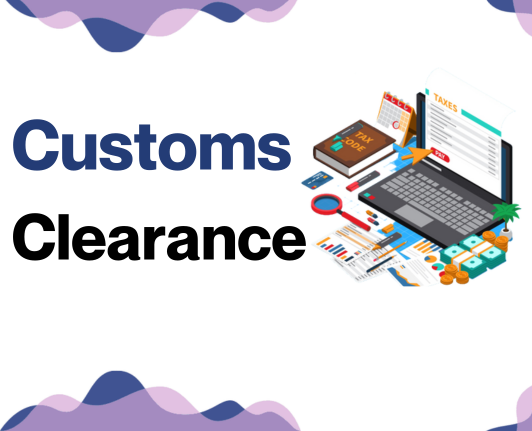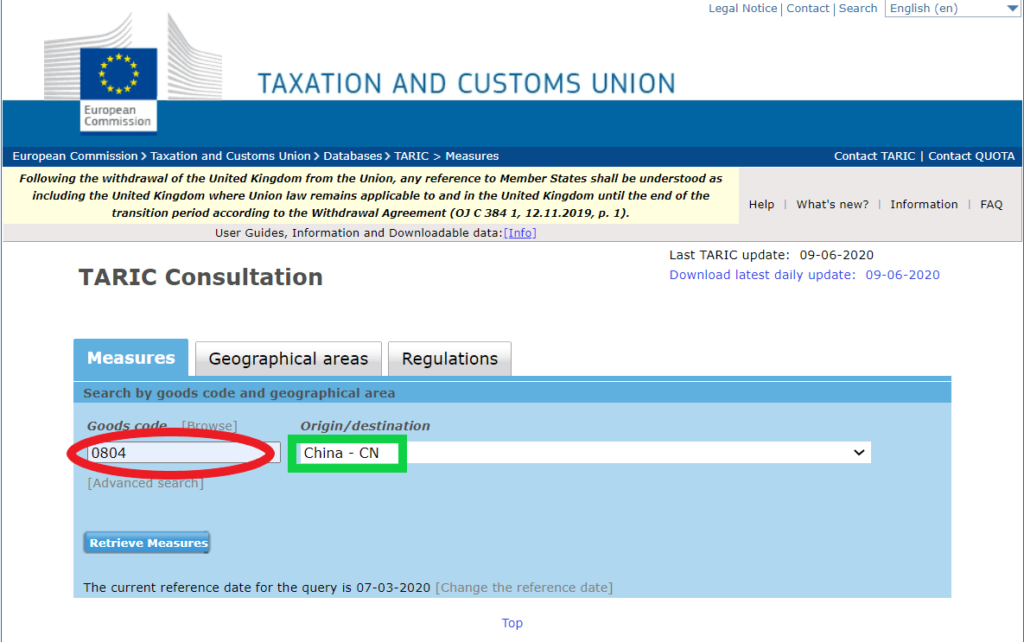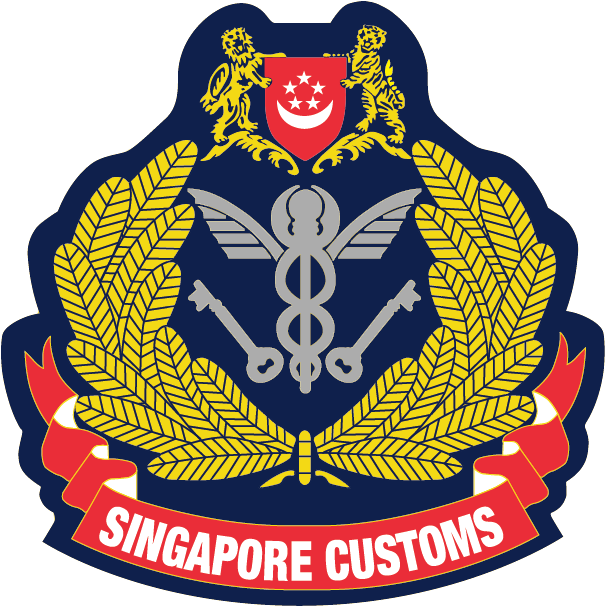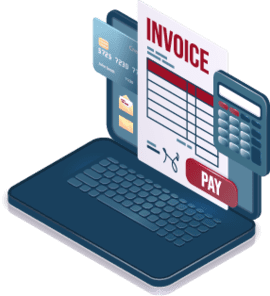Be careful not to choke on your green tea, but shipping goods from China to Singapore isn't always a walk in the Great Wall park! The real hurdle lies in decoding shipping rates, being aware of the shifting transit times, and comprehending the ever-changing customs regulations. This comprehensive guide can be your beacon in this complex journey, revealing the ins and outs of various freight options, whether by air, sea, road, or rail, while also providing a deep dive into customs clearance, duties, and taxes. Tailored specifically to streamline your business's shipping operations, we offer advice and tips drawn from years of expertise in the field. If the process still feels overwhelming, let DocShipper handle it for you! As an experienced international freight forwarder, we are dedicated to making your shipping challenges our own and turning them into successes for your business.
Which are the different modes of transportation between China and Singapore?
In our globe-trotting journey of international trade, let's focus on two powerhouses: China and Singapore. Imagine them as neighboring kids wanting to pass toys - the small sea between them doesn't pose a huge hurdle! Air and Sea emerge as the top transport methods. While air is faster, like express delivery, sea freight is the sturdy tortoise of our trade tale, carrying heavier loads. Choosing the best method is like picking the right backpack for a journey; it depends on the size, weight, worth, and urgency of your 'toys'. Tailoring to your needs, we'll explore the best paths for your cargo buddies.
How can DocShipper help?
When it comes to shipping goods between China and Singapore, DocShipper is your reliable partner. Our savvy team arranges streamlined transport, handles complex customs procedures and ensures swift delivery. No more language barriers or hazy import rules. Want a less bumpy road to your destination? Contact us for a free estimate in under 24 hours or reach out to our consultants for free advice. You're only a call away from a stress-free shipping experience.
DocShipper Tip: Sea freight might be the best solution for you if:
- You are shipping large volumes or bulky items, as sea freight offers the most space at a cost-effective rate.
- Your cargo doesn't have an urgent deadline, as sea freight typically has longer transit times compared to air or rail.
- Your shipping routes are between major ports, allowing you to leverage the extensive global network of sea shipping lanes.
Sea freight between China and Singapore
China and Singapore share a bustling trade network, brimming with people, products, and plans. The beating heart of this commerce is their respective waterways. From the sprawling Port of Shanghai to the hyper-efficient Port of Singapore, sea freight bridges the divide, providing a cost-effective solution for transporting high-volume goods. However, don't be fooled to believe that it's smooth sailing all the way.
Indeed, for many businesses and shippers, this vast maritime route appears more like a labyrinth than a highway. Missteps abound, each one showing how customs, tariffs, and logistics can quickly capsize the unprepared. But, with careful preparation and attention to shipping best practices, these potential pitfalls can be navigated with ease. Let's set on a course to uncover the hidden currents of this all-important trade route, ensuring safe passage for your goods to their destination. Just as a wise sailor knows the sea, so too will you learn to master the waves of Ocean shipping between China and Singapore. Get ready to cast off!
Main shipping ports in China
Port of Shanghai
Location and Volume: Located at the middle of the 18,000-kilometer-long Chinese coast, this port is essential for the shipping routes of the Asia-Pacific region, featuring a whopping shipping volume of 43.3 million TEUs in 2019.
Key Trading Partners and Strategic Importance: Shanghai's main trading partners are other major global economies, including the USA, the European Union, and Japan. The port is of significant importance due to its modern, well-equipped facilities and significance for international trade.
Context for Businesses: If you're looking to tap into the vast Chinese market or establish a supply chain throughout the Asia-Pacific region, the Port of Shanghai, with its strategic location and massive shipping capabilities, will likely be an integral part of your strategy.
Port of Ningbo-Zhoushan
Location and Volume: Situated on the coast of the East China Sea in northeastern Zhejiang province, this port is vital for servicing the booming economies in Zhejiang and Jiangsu, boasting a shipping volume of 27.5 million TEUs in 2019.
Key Trading Partners and Strategic Importance: The port's key trading partners include South Korea, Taiwan, and the United States. It stands out for handling a wide range of goods, including crude oil and iron ore, and its vast network of hinterland connections.
Context for Businesses: If your business involves diverse cargo types, Ningbo-Zhoushan, with its ability to handle different goods from raw materials to consumer products, is sure to enhance your supply chain flexibility.
Port of Shenzhen
Location and Volume: Located in Guangdong province, this port is vital for the Pearl River Delta economic zone, allocating a shipping volume of 25.74 million TEUs in 2019.
Key Trading Partners and Strategic Importance: Being in close proximity to Hong Kong, the port's key trading partners include Southeast Asia, Europe, and the USA. The Port of Shenzhen is a crucial force in China's 'Belt and Road' initiative, linking China's coastal cities with 300 ports in 102 countries worldwide.
Context for Businesses: If your aim is to establish a broad, global footprint, the Port of Shenzhen's immense international network could be a cornerstone for your business's shipping strategy.
Port of Guangzhou
Location and Volume: This port is located on the Pearl River, servicing the economic hub of Guangzhou, with a shipping volume of 21.59 million TEUs in 2019.
Key Trading Partners and Strategic Importance: The port's key trading partners are mainly located in East Asia, America, and Europe. It's strategically significant due to its location at the mouth of the Pearl River--China's second longest river and a vital economic corridor.
Context for Businesses: If your business requires access to the burgeoning inland Chinese markets along the Pearl River, the Port of Guangzhou can help meet this need.
Port of Hong Kong
Location and Volume: Known as one of the busiest ports globally, Hong Kong handles an annual throughput of 19.6 million TEUs.
Key Trading Partners and Strategic Importance: Hong Kong's key trading partners include the USA, China, and Singapore. The port is of international importance, being a free port without any customs and excise duties on imports and exports.
Context for Businesses: If you're seeking lowered shipping costs and simplified customs procedures, the Port of Hong Kong could prove a powerhouse for your logistical framework.
Port of Qingdao
Location and Volume: Located in Shandong province, this port is key to the Bohai Economic Rim area, boasting an impressive shipping volume of 18.26 million TEUs in 2019.
Key Trading Partners and Strategic Importance: The port's key trading partners include Japan, South Korea, and the USA. Qingdao is one of the world's top ports for international trade both in container and bulk commodities.
Context for Businesses: Qingdao, with its robust infrastructure and wide commodity handling range, can cater to businesses looking to reach audiences within the Bohai economic rim and beyond, enriching regional and global supply chains.
Main shipping ports in Singapore
Port of Singapore
Location and Volume: The Port of Singapore is strategically located at the tip of the Malay Peninsula, making it a key gateway for international trade, with a massive shipping volume of 36.6 million TEUs in 2020.
Key Trading Partners and Strategic Importance: As one of the world's busiest transshipment hub, its main trading partners include China, Indonesia, Malaysia, the United States, and several European Union countries. Its strategic importance is underlined by its connectivity to more than 600 ports globally.
Context for Businesses: The Port of Singapore, with its advanced facilities and wide range of maritime services, may serve as a crucial component in your supply chain if you're looking to expand trade within Asia or further afield. Its comprehensive connectivity provides easy access to a plethora of markets worldwide. The port is also renowned for its high efficiency, which could expedite your shipping turnaround times.
Port of Pasir Panjang
Location and Volume: Positioned on the southern part of Singapore, the Port of Pasir Panjang handles a significant volume of Singapore's total container transshipment traffic, contributing to the city-state's standing as a leading global port.
Key Trading Partners and Strategic Importance: The port's key trading partners span numerous countries, reflecting Singapore's global trading network. It’s integral not just for global maritime businesses but also for Singapore's domestic economic activity.
Context for Businesses: If you aim to reach extensive international markets, the Port of Pasir Panjang could play a key role in your shipping strategy. Its strategic location enables it to facilitate swift transshipment, potentially accelerating your goods' time-to-market. By leveraging the port’s networking advantage, your company could more easily break into new markets around the world.
Port of Keppel
Location and Volume: Located off the southern coast of Singapore, the Port of Keppel deals primarily in dry-bulk, liquid-bulk, and container shipping. Though not as large in volume as the Port of Singapore, it still plays a significant role in the region's shipping industry.
Key Trading Partners and Strategic Importance: As part of the Singaporean port system, Keppel's strategic significance lies mainly in the handling of non-containerized goods and raw materials, playing a major part in the region’s overall economic fabric.
Context for Businesses: If your business revolves around exporting or importing bulk commodities or raw materials, the Port of Keppel may align well with your logistical needs. Given its specialized focus, it's equipped with infrastructures to handle such cargo types more proficiently, potentially reducing hassles and contributing to operational efficiency.
Port of Sembawang
Location and Volume: Positioned on the northern coast of Singapore, the Port of Sembawang, though smaller compared to the Ports of Singapore and Pasir Panjang, still holds a crucial role, largely serving the military and supporting industries.
Key Trading Partners and Strategic Importance: Given its military-leaning operations, the Port of Sembawang's strategic importance is distinctly different from the others, providing vital maritime support to the Singapore Navy and its allies.
Context for Businesses: Notably, if your company serves the military and associated industries and requires port support in this region, the Port of Sembawang may be a fitting choice. It offers tailored facilities and services that cater to specific naval and industry needs, allowing your trading activities to proceed with added ease and proficiency.
Port of Brani
Location and Volume: Located on the island of Pulau Brani, just off the southern coast of Singapore, the Port of Brani is a smaller, specialized port primarily dealing with container shipping activities.
Key Trading Partners and Strategic Importance: The Port of Brani forms an integral part of Singapore's sprawling port system, servicing a myriad of trading partners alongside the larger ports.
Context for Businesses: If your business operates containerized shipping and seeks a more specialized port within Singapore's bustling port-framework, the Port of Brani might suit your requirements. Leveraging its smaller scale, the port may offer more dedicated handling and quicker turnaround times for your specific shipping operations.
Port of Tanjong Pagar
Location and Volume: Situated at the southern tip of Singapore, the Port of Tanjong Pagar contributed significantly to the shipping volume until its operations were relocated to Pasir Panjang Terminal to accommodate larger volumes.
Key Trading Partners and Strategic Importance: When operational, Tanjong Pagar Terminal was a key component of Singapore's maritime capabilities, servicing a broad array of trading partners.
Context for Businesses: Although the Port of Tanjong Pagar no longer operates independently, its role was critical in Singapore's port landscape, serving as a case study in how a well-managed port can bolster a country's maritime standing. Businesses may find useful strategies by studying its operation.
Should I choose FCL or LCL when shipping between China and Singapore?
Choosing between Full Container Load (FCL) and Less than Container Load (LCL), also known as consolidation, can make or break your sea freight journey from China to Singapore. The ripple effect of your choice reverberates through cost, delivery time, and success rate. Optimally, your decision is no trivial matter – it's a strategic linchpin. This section unlocks the specifics of FCL and LCL, empowering you to make an informed, successful decision tuned finely to your shipping requirements. Ready to become a maestro of maritime logistics? Let's dive in.
LCL: Less than Container Load
Definition: LCL (Less than Container Load) shipping is a method for shipping goods that don't require the full capacity of a shipping container. This transportation method consolidates multiple shipments from different shippers into a single container.
When to Use: LCL is an excellent choice when your cargo volume is small, usually less than 15 cubic meters (CBM). It offers the advantage of flexibility and cost-effectiveness for low volume shipments.
Example: Let's take the example of a startup business that wants to import unique handicrafts from China for its Singaporean customers but their initial order doesn't need a full container. With an LCL shipment, they can share container space with others, hence making it a cost-effective, flexible option that matches their volume needs.
Cost Implications: While LCL freight charges are usually more expensive per CBM compared to a full container load, it is a more affordable option for small volumes since you only pay for the space you need. Remember to account for associated costs such as loading, unloading, and customs clearance, as they can affect the total cost of your LCL freight.
FCL: Full Container Load
Definition: FCL, or Full Container Load, refers to a method of shipping where a single container is dedicated solely to your cargo. This option falls under 'fcl shipping' and is typically organized based on standardized container sizes, namely the 20'ft and 40'ft container varieties.
When to Use: FCL is the most cost-effective option for larger shipments, specifically when your cargo exceeds a volume of 13/14/15 cubic meters (CBM). The safety of your goods is also enhanced with FCL, as the container is sealed at the origin and remains intact until it reaches its destination.
Example: Suppose you're a machinery distributor, shifting heavy machinery parts from your factory in China to warehouses in Singapore. With individual parts exceeding a combined volume of 15 CBM, opting for an FCL container would ensure cheaper shipping costs per unit and a secure environment for your high-value goods.
Cost Implications: While your 'fcl shipping quote' will largely depend on the size of the container, an FCL shipment is generally less expensive per unit compared to LCL for large volumes. However, FCL involves higher upfront costs due to the container's size and fixed price regardless of whether it's fully loaded or not.
Unlock hassle-free shipping
Simplifying international shipping is what DocShipper, your expert freight forwarder, does best. Gambling with cargo will be a thing of the past with our ocean freight savants determining if consolidation or a full container is right for your business. Factors such as volume, shipping cost, and delivery time will be harmoniously balanced. Say goodbye to the overwhelming jargon and say hello to a seamless shipping experience. Put us to the test and request a free estimation today!
How long does sea freight take between China and Singapore?
Sea freight between China and Singapore typically tends to average around 10 to 14 days; however, transit times can greatly vary. Several factors influence these times, such as the specific ports utilized, the weight, and the type of goods being shipped. To get an exact estimate tailored to your shipping needs, we recommend contacting a reputable freight forwarder, like DocShipper.
Following are the average transit times for sea freight between the most frequented four main ports in China (Port of Shanghai, Port of Shenzhen, Port of Ningbo, and Port of Guangzhou) and Singapore (Port of Singapore):
| Origin Port (China) | Destination Port (Singapore) | Average Transit Time (in days) |
| Port of Shanghai | Port of Singapore | 8-14 |
| Port of Shenzhen | Port of Singapore | 3-5 |
| Port of Ningbo | Port of Singapore | 10-16 |
| Port of Guangzhou | Port of Singapore | 11-15 |
*Please bear in mind that these are just average times and actual transit times may vary.
How much does it cost to ship a container between China and Singapore?
Tackling the ocean freight rates between China and Singapore? The cost can range widely per Cubic Meter (CBM), and pinning down specifics can seem like a guessing game. That's because several elements come into play - the Point of Loading, Point of Destination, chosen carrier, nature of your goods, and even monthly market swing can make a significant impact. You might wonder if you’re getting the best shipping cost. Rest assured, we're here to remove the guesswork. Our shipping specialists understand these waters and can offer a competitive, personalised quote tailored to your needs. Let's navigate this journey together, setting sail for cost-effective shipping.
Special transportation services
Out of Gauge (OOG) Container
Definition: The OOG container is a shipping solution that accommodates out-of-gauge cargo. Here, gauge refers to standard sea container dimensions. When cargo exceeds these restrictions in width, height, or length, it's deemed 'out of gauge'.
Suitable for: If your goods are oversized or uniquely shaped that regular containers cannot accommodate.
Examples: Large machinery, overhanging parts of airplanes, or windmill blades fall into this category.
Why it might be the best choice for you: OOG container provides flexible options for your non-standardized goods, making it ideal for transporting oversized equipment between China and Singapore.
Break Bulk
Definition: Also known as break bulk cargo, this shipping implement separates goods that aren't contained within a method of transportation like a truck or a container, essentially a loose cargo load.
Suitable for: Larger goods that aren't suited to standardized containers.
Examples: Steel products, forest products or oversized machinery come under break bulk shipments.
Why it might be the best choice for you: Shipping as break bulk allows for greater flexibility with your cargo size and type, since it does not need to conform to container dimensions.
Dry Bulk
Definition: Dry bulk pertains to cargo shipped in large parcels without a count or mark, and loaded directly into the vessel's hold.
Suitable for: Homogeneous commodities that are poured and unloaded like a liquid.
Examples: Coal, grains, or minerals often get shipped as dry bulk.
Why it might be the best choice for you: If you're transporting large quantities of unprocessed materials between China and Singapore, dry bulk may be the most cost-effective and efficient choice.
Roll-on/Roll-off (Ro-Ro)
Definition: A Ro-Ro vessel employs built-in ramps to allow goods, typically wheeled cargo, to be 'rolled on' and 'rolled off' the ship.
Suitable for: Anything on wheels or tracks that can drive onto the ship under its own power.
Examples: Cars, trucks, semi-trailer trucks, trailers or railroad cars can be shipped via Ro-Ro vessels.
Why it might be the best choice for you: If you're dealing with heavy ground transport vehicles, Ro-Ro shipping ensures your goods remain mobile and accessible, simplifying loading and unloading.
Reefer Containers
Definition: As the name suggests, these are refrigerated containers designed to transport temperature-sensitive cargo.
Suitable for: Perishables or any other goods that require temperature control during transit.
Examples: Fresh fruits, meats, or pharmaceuticals commonly use reefer containers.
Why it might be the best choice for you: If you're exporting goods that need a constant temperature between China and Singapore, reefer containers offer a reliable solution.
At DocShipper, we understand how crucial every shipment is for your business, and it's our goal to provide the best service tailored to your needs. Feel free to contact us for a free shipping quote in less than 24h. Step into the world of hassle-free international logistics with us.
DocShipper Tip: Air freight might be the best solution for you if:
- You are in a hurry or have a strict deadline requirement, as air freight offers the fastest transit times.
- Your cargo is less than 2 CBM (Cubic Meter), making it more suitable for smaller shipments.
- Your shipment needs to reach a destination that is not easily accessible by sea or rail, allowing you to tap into the extensive network of global airports.
Air freight between China and Singapore
When it comes to shipping goods lightning-fast between China and Singapore, air freight is a reliable Sherlock Holmes, cracking the case for small, high-value items like smartphones or designer accessories. It may be pricier than maritime shipping, but its speed likened to the Formula 1 cars make it a worthy investment to safeguard the value of these merchandise. However, this route has its own pitfall.
In the thrilling world of air freight, many shippers sail too close to the wind, miscalculating costs due to not using the correct weight formula or overlooking best practices. This could be as treacherous as walking a tightrope blindfolded. It's like trying to buy a designer dress without checking the price tag first - it could set you back more than you expect. We'll walk you through how to avoid these pitfalls, saving yourself from wallet-gnawing regrets in the process.
Air Cargo vs Express Air Freight: How should I ship?
When you're shipping from China to Singapore, deciding between air cargo or express air freight can make a big impact on your business. The casual language to catch the difference would be: air cargo's like having a room in a shared apartment (airline), while express air freight is like renting out the whole place yourself (dedicated plane). Now, let's dive into the nitty-gritty so you can select what fits your business operations best.
Should I choose Air Cargo between China and Singapore?
Deciding on air cargo for your freight from China to Singapore could be a judicious choice for volumes above 100/150 kg (220/330 lbs). Airlines such as China Southern and Singapore Airlines Cargo offer reliable services. While somewhat pricier, these airlines are known for their precision in delivery times. Keep in mind, however, that the longer transit times are due to their fixed schedules. If budgeting isn't a constraint, opting for air cargo might align with your needs for punctuality and reliability.
Should I choose Express Air Freight between China and Singapore?
Express air freight refers to an exclusive service leveraging cargo-only planes, without passengers, specialized for quick and efficient deliveries. Ideal for shipments not exceeding 1 CBM or 100/150 kg (220/330 lbs), this service offers speedy delivery, direct routing and ultimate privacy. Companies like FedEx, UPS, and DHL are renowned names in this sector. If your business requires swift shipment of less weighty items from China to Singapore, this method is a time-saving solution that prevents delays and ensures your deadlines are met. Thus, with express air freight, not only do your good reach faster, but your business also stays ahead in the game.
Main international airports in China
Beijing Capital International Airport
Cargo Volume: 2,033,000 Metric Tons (2018)
Key Trading Partners: USA, Japan, South Korea, Hong Kong, Australia
Strategic Importance: China's busiest and most crucial airport. It plays a vital role in facilitating trade between China and its key business partners. Its location in Beijing provides proximity to pivotal political, economic, and technological hubs.
Notable Features: Equipped with state-of-the-art cargo facilities, it manages a multitude of international cargo flights daily.
For Your Business: If your trade partners are located in the northern parts of China, or you deal with high-tech industries, consider making this airport a primary component of your logistics strategy for faster and efficient delivery.
Shanghai Pudong International Airport
Cargo Volume: 3,825,678 Metric Tons (2020)
Key Trading Partners: USA, Japan, South Korea, Hong Kong, Australia
Strategic Importance: This airport is one of the busiest cargo hubs globally due to Shanghai's status as a global financial center.
Notable Features: The airport has a dedicated Air Mail Center and express cargo handling ability.
For Your Business: With Shanghai's profound influence on commerce, finance, technology, and transport, this airport can be especially useful if your supply chain involves frequent shipments to and from Southeast Asia and the Pacific region.
Guangzhou Baiyun International Airport
Cargo Volume: 1,780,000 Metric Tons (2018)
Key Trading Partners: North America, the Middle East, Africa, Southeast Asia
Strategic Importance: Located in the Guangdong province, it serves the industrial region of South China, acting as a gateway to the Greater Bay Area.
Notable Features: It houses UPS's Asia Pacific Hub, which helps handle international express cargo.
For Your Business: If your business heavily involves export and import with the Middle East, Africa, or Southeast Asia, this airport can help streamline your logistics plans.
Shenzhen Bao’an International Airport
Cargo Volume: 1,218,502 Metric Tons (2019)
Key Trading Partners: Europe, East Asia, North America, South Asia.
Strategic Importance: Located in the Pearl River Delta, it aids in the movement of cargo between China's fastest-growing economic region and various global destinations.
Notable Features: It specializes in handling perishable goods and has advanced cold chain facilities.
For Your Business: Leveraging its specific capabilities, this airport can be a great asset if your business involves perishable goods requiring robust cold-chain logistics.
Hong Kong International Airport
Cargo Volume: 4.5 million Metric Tons (2020)
Key Trading Partners: Mainland China, USA, India, Japan
Strategic Importance: Third busiest cargo airport worldwide, it serves as conduit for cargo transition between Mainland China and other world regions.
Notable Features: It has an express cargo terminal and advanced chilled cargo storage facilities.
For Your Business: If your business involves shipment of perishable goods or rapid express cargo, it's worth considering having this hub integrated in your shipping route for its advanced facilities and global connectivity.
Main international airports in Singapore
Changi International Airport
Cargo Volume: Changi International Airport is one of the busiest cargo airports in the world, handling over 2 million tons of cargo each year.
Key Trading Partners: Key trade routes from Changi include flights to the United States, China, Australia, and European countries like the UK, Germany, and Switzerland.
Strategic Importance: As Singapore's largest airport, Changi boasts a strategic location in the heart of Asia, serving as a central hub for flights connecting key economic centers across the Asia-Pacific region.
Notable Features: The airport is equipped with state-of-the-art facilities, including cargo carrier capacity for all sizes, customs services available 24/7, and a Skytrain service for quick terminal transfers. It offers a Free Trade Zone which allows duty-free storage and transshipment of goods, aiding in efficient cargo handling.
For Your Business: If your business is involved in high-volume import-export activities with Asia-Pacific partners, Changi can provide efficient, rapid handling of your goods. Its 24/7 customs services ensure smooth cargo clearance and the Free Trade Zone may offer significant cost savings.
Seletar Airport
Cargo Volume: Although smaller than Changi, Seletar Airport nevertheless handles a substantial volume of cargo, catering mainly to the region's General Aviation (GA) and aerospace sectors.
Key Trading Partners: Its key trading partners are primarily countries within Southeast Asia, including Indonesia, Malaysia, and the Philippines.
Strategic Importance: The airport's strategic importance rests in its role as a secondary hub, serving business and general aviation operations including private jet handling and maintenance, repair, and overhaul (MRO) services.
Notable Features: The airport houses an integrated four-story building that serves MRO activities and boasts a 60,000 square meter Aircraft Parking Area. It's often used for time-sensitive cargo like perishable goods or urgent documents due to less congestion.
For Your Business: If you're in the aerospace sector or need to ship small-scale or time-sensitive cargo within Southeast Asia, Seletar may serve your needs well. Its specialized facilities can handle niche and sensitive goods, offering you a faster turn-around and prompt delivery service.
How long does air freight take between China and Singapore?
On average, shipping goods between China and Singapore via air freight can take around 3-5 days. However, it's crucial to note that this duration often fluctuates depending upon certain variables. These include the actual departing and arrival airports, the weight of your shipment, and the types of goods you're shipping. If you're in search of more accurate timings, it's advisable to seek assistance from a freight forwarder like DocShipper.
How much does it cost to ship a parcel between China and Singapore with air freight?
Average air shipping costs per kg from China to Singapore range considerably depending on several factors including proximity to departure and arrival airports, parcel dimensions, weight, and nature of goods. It's due to these complexities that we don't offer a one-size-fits-all quote. Rest assured, our experienced team collaborates with clients to determine optimal solutions, always quoting on a case-by-case basis ensuring the best value. Reach out to us today; you'll receive a bespoke and competitive quote within just 24 hours.
What is the difference between volumetric and gross weight?
Gross weight refers to the actual weight of a shipment, including all packaging and filler materials. Volumetric weight, on the other hand, pertains to the space your package occupies on a plane, regardless of its actual weight.
For Air cargo, gross weight is simple - it's measured directly using a scale. Volumetric weight, though, is calculated by the formula: Length(cm) x Width(cm) x Height(cm) / 6000. This quotient gives you the volumetric weight in kilograms.
Express Air Freight Services often use a similar approach but different factor in the denominator - Length(cm) x Width(cm) x Height(cm) / 5000.
Let's illustrate this with an example. Say, you are shipping a box containing machinery parts. The box has dimensions of 100cm x 50cm x 30cm and weighs 45kg. The gross weight is 45kg or 99.2lbs.
Calculating volumetric weight for Air cargo, you'd get 100 x 50 x 30 / 6000 = 25kg or 55.1lbs. For Express Air Freight Services, it would be 100 x 50 x 30 / 5000 = 30kg or 66.1lbs.
Now, why does this matter? Freight charges are based on the higher of the two weights – gross or volumetric. Therefore, understanding these calculations can help you optimize your packing for cost-effective shipping.
DocShipper tip: Door to Door might be the best solution for you if:
- You value convenience and want a seamless shipping process, as door-to-door takes care of every step from pickup to delivery.
- You prefer a single point of contact, as door-to-door services typically provide a dedicated agent to handle all aspects of the shipment.
- You want to minimize the handling of your goods, reducing the risk of damage or loss, as door-to-door minimizes transitions between different modes of transport.
Door to door between China and Singapore
Navigating international shipping can be tricky but door-to-door delivery is here to simplify the process. This service, especially between bustling hubs like China and Singapore, covers every logistical step, from the sender's location right to your doorstep. It offers unparalleled convenience and cost-efficiency - no wonder it's a crowd favorite! So, curious about how it works? Let’s dive in.
Overview – Door to Door
Door-to-door shipping from China to Singapore offers a seamless logistics solution, eliminating the complicated nuances of freight management. This service is the golden ticket for businesses, providing a highly organized process that ensures timely delivery. However, cost and responsibility lie entirely with you. But worry not, the extra expense pays off in reducing shipment stress and hurdles. It's no surprise that DocShipper clients often opt for this service! With this approach, wave goodbye to handling multiple providers and complex custom clearances! Prepare for a smoother, more structured experience right from pick-up to delivery. Discover how'magical this method can be for your business!
Why should I use a Door to Door service between China and Singapore?
Ever lost sleep over tedious logistics management? Laugh that worry away with Door to Door services! Now, focus on the 'why' - why should you use this Godsend for shipping between China and Singapore?
1. Procrastinator Repellent: No sorting through a bunch of logistics jargon; the service handles everything from picking up your goods in China to delivering them to your doorstep in Singapore. It’s logistics made easy - you'll never miss a deadline.
2. Speed Racer: Need your goods yesterday? This service is as close as it gets, with expedited procedures to ensure timely delivery for urgent shipments. So, breathe easy and watch as your shipment zips through customs.
3. Cargo Connoisseur: Have a unique shipping requirement? Not to worry. Your complex cargo receives specialized care with Door to Door service - every item is treated like royalty.
4. Benny the Break-time Benefactor: This service saves you time. Forget coordinating with route planning or transport booking - you're not a logistics expert (and you don’t need to be). Hand that control over and enjoy your coffee break.
5. End to End Ease: With Door to Door service, your cargo is handled with finesse until the final destination, eliminating the stress of coordinating various trucking and delivery services. Relax and leave the heavy lifting to us!
Using a Door to Door service could quite literally be the difference between a worry-free day at the office and a logistics-induced migraine. Let’s make savvy business moves, shall we?
DocShipper – Door to Door specialist between China and Singapore
Experience seamless and worry-free shipping with DocShipper! We're your A-to-Z solution for door-to-door delivery from China to Singapore – specializing in packing, transportation, customs clearance, across all shipping modes. A dedicated Account Executive stands ready to make this process smooth and efficient for you. Get in touch for a free, no-obligation estimate within 24 hours, or speak directly to our shipping consultants at no cost.
Customs clearance in Singapore for goods imported from China
Navigating the customs clearance landscape in Singapore for imported goods from China can be complex and full of potential stumbling blocks such as unforeseen costs. It's crucial to grasp customs duties, taxes, quotas, and licenses to avoid your goods getting trapped in customs limbo. Understanding these areas could mean the difference between smooth operations or costly delays. Don't worry – in the coming sections, we're going to break all these aspects down. If you need help, DocShipper is always on hand. Let our team assist with any kind of goods, anywhere in the world; just provide us with the origin, value, and HS Code of your goods for an estimation to kickstart your project. Let's ensure your freight forwarding experience is as seamless as possible.
How to calculate duties & taxes when importing from China to Singapore?
Starting off, knowing the duties and taxes when importing goods from China to Singapore is a crucial part of your shipping journey. It comes down to several factors: the country where the goods originated; the product's Harmonized System (HS) Code, a universal standard for classifying traded products; the declared customs value of the goods, often equivalent to the purchase price; the specific tariff rate applicable to your goods under Singapore customs law; and, any additional taxes and fees applicable to those goods.
The first stepping stone in this process is pinpointing the country where your goods were actually manufactured or produced. The 'country of origin' isn't always where the goods are shipped from, it's where the goods were made, grown, or put together – an essential piece of information to precise your customs duties calculation. Let's take this one step at a time, ensuring your importing process is as smooth as possible.
Step 1 - Identify the Country of Origin
Recognizing your goods' country of origin, in this case China, charts the course of your import journey. Here are five reasons this simple fact is vital:
First, trade agreements, such as the China-Singapore Free Trade Agreement (CSFTA), have provisions that can alter customs duties, adding nuances to your cost calculations.
Second, duties vary based on product categories and their country of origin. If your goods come from somewhere else, duties could be different.
Third, some goods might face restrictions or need special permits. Factors like materials used, product safety, and environmental impact can trigger these requirements.
Fourth, knowing your goods' origin helps you work out preferential duty rates, potentially reducing import costs.
Finally, origin determines documentation requirements. China may require different paperwork from other countries.
So, even though getting the HS Code is important, don't skip the country of origin. It sets the tone for how your import process will roll out. Stay aware of current trade agreements and import restrictions to handle your shipping smoothly and cost-effectively.
Step 2 - Find the HS Code of your product
In understanding international trade, the Harmonized System (HS) Code is a vital piece of the puzzle. It's a universal economic language and code for goods, crucial for customs declaration and clearing goods through customs. The HS Code is a product-specific code that classification offices and customs use for taxation and goods management.
Often, the simplest way to find the HS Code for your goods is to ask your supplier. They're intimately familiar with the goods they're importing and the associated regulatory requirements.
If your supplier cannot provide the HS Code, don't worry! A step-by-step guide to finding it yourself is available. First off, avail yourself of an HS lookup tool. An example of this is the Harmonized Tariff Schedule, where you input the name of your product in the search bar and find the code under the Heading/Subheading column.
Never forget that accuracy is crucial when it comes to the HS Code. Please note: using incorrect codes can lead to delays in shipment, legal issues, and even fines for misdeclaration.
Lastly, understanding HS Codes doesn't have to be a complicated process. Here's an infographic showing you how to read an HS code.
Step 3 - Calculate the Customs Value
Understanding the Customs Value is essential in shipping your goods from China to Singapore. It's not simply the price you've paid for your merchandise. It's actually the CIF (Cost, Insurance, and Freight) value. This includes the cost of your goods, the cost of international shipping, and the insurance cost – all summed up. It's a common misconception to equate it to product value; in reality, you could have a high-value product with substantial shipping and insurance, resulting in a far higher customs value. For instance, if you purchased goods for $5000 with a shipping fee of $1500 and insurance of $500, your customs value isn't just $5000, but $7000 instead. Remember, the higher the customs value, the more customs duty you may have to pay. So, plan accordingly!
Step 4 - Figure out the applicable Import Tariff
An import tariff is essentially a tax that an importer pays to bring goods into a country, with the rate of tax varying based on the type of goods and their declared value. In Singapore, they apply a Harmonized System (HS) to classify traded products and ascertain their tariff.
Here's a hypothetical example for understanding:
Let's assume you're importing a stainless steel cooking pot from China to Singapore, classified under HS Code 7323.93.00.00, the 'household articles and parts thereof, of stainless steel'. By searching this code on Singapore's TradeNet System (link), you'd learn the tariff for this item is 5%.
Now, imagine your declared, 'Cost, Insurance, and Freight' value (CIF) for the cooking pots is $10,000 USD. To calculate your import duty, you'd simply apply the tariff rate to your CIF value. So, for this example:
$10,000 (CIF) x 5% (Tariff) = $500
Your import tariff attribute to customs for these imported pots would be $500 USD. This elementary exercise should assist you to get a handle on the basic calculation of import tariffs. Just remember, tariffs can vary and occasionally there may be additional duties applied by customs on specific goods.
Please carry out the tasks as what we implied above, fill out the blanks with:
- Your HS Code
- Origin of goods
Step 5 - Consider other Import Duties and Taxes
In your import journey, beyond the standard tariff rate, be aware that other duties can also spring up. These depend on your product and its country of origin. For instance, an Excise Duty applies to certain goods like alcohol and tobacco, tacked onto the price when brought into Singapore from China.
Another potential cost might be Anti-Dumping Taxes. If a country believes another is selling goods significantly below fair market value, they can apply these taxes to level the playing field.
Don't overlook the Value Added Tax (VAT), a significant part of the puzzle. In Singapore, VAT is known as Goods and Services Tax (GST). Imagine you import a batch of phones from China worth $1000. If the current GST rate is 7%, you will need to account for an additional $70.
Lastly, bear in mind that these examples and rates can change and vary based on various factors. Always consider seeking professional advice to avoid unforeseen penalties and to keep your costs optimal. Your priority should be to understand and accurately predict all the potential import costs.
Step 6 - Calculate the Customs Duties
A crucial step in shipping goods from China to Singapore includes accurately calculating the customs duties. The formula involves considering the customs value (CIF) of your goods plus other fees and expenses like VAT (7% in Singapore) and potential anti-dumping taxes.
As an example, let's say you're shipping phones valued at $8,000 with a 5% customs duty. Without VAT, your payable duty equals $400 ($80005%). However, if VAT applies, your charges increase - you'll calculate it on the total of Customs value+$400 duty, resulting in an additional $588 in charges. In a more complex scenario involving custom duties, VAT, anti-dumping taxes, and Excise Duty on alcohol and tobacco for example, you'd use the same formula but add the respective rates for each tax component.
Pressure from international duties can be overwhelming, but it's important to get it right - the wrong calculations could mean you pay more than required. Consider a stress-free customs clearance process by entrusting DocShipper. With our expertise in global shipping, you're assured not to be overcharged. Plus, we offer a free quote in less than 24 hours, truly making international trade more accessible. Contact us today and continue moving your business forward the right way.
Does DocShipper charge customs fees?
DocShipper, your customs broker in China and Singapore, isn't the recipient of customs duties - these go right to the government. But what about customs clearance fees? You bet, those are our ballpark. These fees are separate from your duties and taxes, which directly benefit the government and not us or any other customs broker. To keep things transparent, we'll provide documents straight from customs to show that what you paid is strictly what the customs office charged. Remember, we're here to ensure your shipment sails smoothly through customs, so let's navigate this together!
Contact Details for Customs Authorities
China Customs
Official name: General Administration of Customs of the People's Republic of China
Official website: http://english.customs.gov.cn/
Required documents for customs clearance
Understanding customs clearance can feel like decoding a complex puzzle, especially with all these crucial elements: Bill of Lading, Packing List, Certificate of Origin, even Documents of Conformity (CE Standard). This guide will demystify these documents, streamlining your freight forwarding experience and helping you avoid unexpected roadblocks. Buckle up as we dive into these nitty-gritty details and make your shipping journey smoother.
Bill of Lading
Navigating the waters of international shipping? Understanding the Bill of Lading (BOL) could be the key to smooth sailing. BOL marks a pivotal moment—it shifts ownership from the seller to the buyer, once the goods reach their destination. Think of it as a golden ticket, crucial for customs clearance, especially between China and Singapore. Now, picture this, you're about to receive your shipment but alas, the original BOL is delayed. Telex release, a form of electronic BOL, is your knight in shining armor! It sends you the release proof digitally, with more speed and less paperwork. If you're in the air cargo game, don’t forget about the AWB (Air Waybill), the BOL's sky-bound cousin. For a fuss-free shipping experience, getting well acquainted with these documents is non-negotiable.
Packing List
Getting your goods from China to Singapore is no small feat, and your Packing List matters more than you think. Don't underestimate its importance. It's your detailed snapshot of what's in your shipment – the proverbial 'X-ray' customs uses to see inside your cargo. Compiled by you, the shipper, it accounts for each item, its quantity, weight, dimensions, and even the material. Miss an entry or make an error in values? Your cargo could be stuck at either Chinese or Singaporean customs, incurring delays and additional costs. Imagine shipping a container filled with LED bulbs, but you listed them as regular incandescent bulbs. You've got a possible hold or fine on your hands. So, for smooth sailing or flying, keep your Packing List accurate whether you're shipping by sea or air, from Shenzhen to Singapore. An accurate Packing List keeps your business, and your goods, moving forward.
Commercial Invoice
When you're shipping goods from China to Singapore, your Commercial Invoice is like your shipment's passport. It details what you're shipping, from the product's value to the terms of sale, and it's crucial for your customs clearance. Any discrepancy can result in delays or penalties. So, double-check to ensure that the Invoice aligns perfectly with your other shipping documents. For instance, if your Bill of Lading says 100 items but the Invoice says 90, you might encounter problems. To make your shipping journey smoother, consider using a Freight Forwarder who can help you manage these details and prevent issues at the customs. In this way, your business keeps running smoothly, and you avoid unwelcome surprises on your China-Singapore shipping route.
Certificate of Origin
Navigating customs clearance from China to Singapore? The Certificate of Origin (CO) is your secret weapon. It's not just a piece of paper; it's your ticket to smoother, more affordable shipping. The CO confirms where your goods were manufactured. For example, if you're exporting toys made in Guangzhou, your CO needs to showcase this. Why is it so crucial? Because it might qualify you for preferential customs duty rates under trade agreements between China and Singapore. So, a correctly filled CO could mean significant savings. Take advantage of this often overlooked form to make your shipping processes more efficient and cost-effective.
Get Started with DocShipper
Shipping from China to Singapore? Navigating complex customs clearance can be hassle-free with DocShipper. Our team manages every step, ensuring your goods clear quickly and efficiently. Don't let paperwork slow you down! Unleash smoother, faster shipments today. Contact us and receive your free, no-obligation quote within just 24 hours. Seize the ease of stress-free customs clearance now!
Prohibited and Restricted items when importing into Singapore
Shipped something to Singapore only to have it held up at customs? Not fun. Singapore has specific rules about what you can and can't bring in. No worries, though. In this guide, we'll clear up the confusion about what's prohibited and restricted so you can ace your next shipment. It's about making your business run smoother. Let's get you prepped.
Restricted Products
- Telecommunication devices: You'll need to secure a Telecommunication Dealer's Class License from the Infocomm Media Development Authority (IMDA).
- Medicinal products: For any medicinal products, a Product License from the Health Sciences Authority (HSA) is required.
- Arms and explosives: If you're dealing with items of this nature, you have to have an Arms and Explosives License from the Singapore Police Force.
- Food products: Any foodstuff you want to bring into Singapore needs to pass through the Agri-Food & Veterinary Authority (AVA).
- Plants or animals: For transporting plants, animals, or any related products, you'll have to apply for an Import Permit from National Parks Board (NParks).
- Radioactive materials: For items that are radioactive in nature, an import license from the National Environment Agency (NEA) is required.
Remember, this list isn't exhaustive and rules can change. Always double-check with the relevant authorities if you're unsure about certain products.
Prohibited products
- Chewing gum (Except therapeutic, dental and nicotine chewing gum)
- Cigarette lighters in the shape of firearms and explosives
- Endangered species of wildlife and their by-products
- Firecrackers
- Obscene articles, publications, video tapes/discs and software
- Reproductions of copyright publications, video tapes, video compact discs, laser discs, records or cassettes
- Seditious and treasonable materials
- Rhinoceros and tiger parts, or products made from such parts
- Radioactive materials
- Narcotics
- Certain types of telecommunication equipment (e.g., scanning receivers, military communication equipment)
- Certain harmful drugs listed in the Poisons Act
- Toy coins and toy currency notes.
- Controlled drugs and psychotropic substances.
- Certain fruits and vegetables from risk countries (e.g., Bactrocera dorsalis (oriental fruit fly) from Sri Lanka and Malaysia).
Are there any trade agreements between China and Singapore
Absolutely! China and Singapore share a strong trade linkage under the China-Singapore Free Trade Agreement (CSFTA), offering preferential access to numerous industries. Additionally, both nations are part of the ASEAN-China FTA, reducing tariff barriers further. Keep an eye out for the Regional Comprehensive Economic Partnership, a mega trade deal including both countries that could offer tantalizing new opportunities. It's integral to stay informed about such agreements, as they can significantly impact your shipment costs and processes in this trade route.
China - Singapore trade and economic relationship
With data stretching back to the Treaty of Friendship and Commerce in 1886, the China-Singapore economic relationship has a rich tapestry of partnership and growth. The cornerstone of their strong relations includes the China-Singapore Free Trade Agreement (CSFTA) in 2009, championing bilateral trade in key sectors like electronics, petrochemicals, and machinery. Over the past decade, bilateral trade has soared, reaching SGD 135.2 billion in 2020, with China being Singapore's largest trading partner. Investments have also surged on both sides. China's investments in Singapore totalled SGD 37.2 billion in 2020, while Singapore's stakes in China amounted to SGD 110 billion. The thriving trade and investment landscape is evidence of the robust and enduring relationship between these two countries.
Your Next Step with DocShipper
When the intricate dance of shipping between China and Singapore feels daunting, rely on DocShipper. Our seasoned experts simplify customs processes, commit to secure transport across air, sea, road, and rail, and deliver on-time. Switch to a hassle-free journey with your goods. Contact us today and let us shoulder the complexities of your next shipment.
Additional logistics services
Dive beyond traditional shipping and customs! Explore how DocShipper manages your entire supply chain, offering comprehensive logistic services to streamline your transport needs with optimal efficiency. Let’s unwrap these bonus advantages!
Warehousing and storage
Storing goods may pose a challenge, especially when they need certain conditions like temperature control. Imagine keeping delicate chocolates from melting - not an easy feat, right? But fret not, we've got you covered with reliable warehousing solutions. More info on our dedicated page: Warehousing.
Packaging and repackaging
When shipping from China to Singapore, adequate packaging is critical! Goods not properly packaged could be damaged during transit. Partnering with a reliable agent ensures your products get the right packaging treatment - from delicate glass products to heavy machinery. Take a look at our examples on the Freight packaging page for the various products we've catered to. More info on our dedicated page : Freight packaging.
Cargo insurance
Transporting cargo isn't the same as safeguarding your warehouse from fire. With transport insurance, your goods are protected during their voyage from unforeseen mishaps. Think sea storms or road accidents - this coverage softens the blow. For instance, if your electronics suffer water damage while at sea, you won't lose sleep over financial losses. More info on our dedicated page: Cargo Insurance.
Supplier Management (Sourcing)
Struggling finding the right suppliers in Asia or East Europe? With our Supplier Management service, say goodbye to language barriers and complex procurement processes. Whether it's textiles from China or electronics from Singapore, we’ve got you covered. We’ll find your perfect match and oversee the entire procurement process. Real-world example? Think of us as your personal matchmaker for suppliers around the globe. More info on our dedicated page: Sourcing services.
Personal effects shipping
Moving from China to Singapore (or vice versa) and worried about your personal items? Rest easy, our Personal Effects Shipping service handles even the most fragile and bulky objects with expert care. Consider the relief when Grandma's antique mirror arrives in perfect condition! More info on our dedicated page: Shipping Personal Belongings.
Quality Control
When shipping from China to Singapore, quality control is tantamount. Imagine unboxing goods at the Singapore port only to find manufacturing defects! A comprehensive inspection during the production phase weeds out such setbacks, ensuring your products hit the standard every time. Take cues from successful businesses that use this service to consistently deliver top-quality goods. For the nitty-gritty, head to our dedicated page: Quality Inspection.
Product compliance services
Ensuring your goods meet all necessary standards is critical in cross-border trade. With our Product Compliance Services, rest easy knowing your goods will pass international regulations. We conduct rigorous tests in our labs for certification, guaranteeing compliance at your shipment's endpoint. Ready for peace of mind? Dive deeper into our Product compliance services. Your compliant journey begins here.
FAQ | For 1st-time importers between China and Singapore
What is the necessary paperwork during shipping between China and Singapore?
In order to manage the shipping from China to Singapore, the central document required is either a Bill of Lading for sea freight or an Air Waybill for air freight, both of which we at DocShipper take care of for you. From your end, you need to submit the packing list and commercial invoice at the very least. Depending on the type of goods you're shipping, additional paperwork such as Material Safety Data Sheets (MSDS) or certifications may be necessary. Remember, we're here to assist at every step and ensure everything flows smoothly.
Do I need a customs broker while importing in Singapore?
Yes, navigating Singapore's customs procedures can be quite complex, requiring a thorough understanding and submission of necessary details and documents. That's where the value of a customs broker comes in. It is highly recommended to engage one for your import activities. At DocShipper, we routinely act as the representative for your cargo during customs interactions, easing the process and facilitating the majority of shipments. By entrusting us, you're ensuring a smoother and more efficient customs clearance process.
Can air freight be cheaper than sea freight between China and Singapore?
As a rule of thumb, factors like route, weight, and volume all play a significant role in determining whether air freight is cheaper than sea freight between China and Singapore. For cargo that's less than 1.5 Cubic Meters or weighs under 300 kg (660 lbs), air freight could potentially be more cost-effective. At DocShipper, our priority is providing you with the most competitive options. Our dedicated account executives will assist you in choosing the most effective form of transportation based on your specific needs.
Do I need to pay insurance while importing my goods to Singapore?
As DocShipper, we would like to clarify that the payment of insurance for importing goods to Singapore isn't obligatory. However, due to the unpredictability of shipping mishaps, such as potential damage or theft, we highly recommend securing insurance coverage for your valued goods. This small investment can prevent considerable losses and give you a greater peace of mind throughout the entire shipping process. Remember, in international shipping, it's always better to be safe than sorry!
What is the cheapest way to ship to Singapore from China?
Generally, due to the relatively close proximity and well-establish sea routes, ocean freight is the cheapest way to ship from China to Singapore. We, at DocShipper, will help you utilise this method while ensuring all goods are conveyed safely and customs procedures are expertly handled.
EXW, FOB, or CIF?
Choosing between EXW, FOB, or CIF depends largely on your relationship with your supplier. They may not be logistics professionals, and that's where we step in at DocShipper. We can handle international freight and destination process, leaving minimal logistics handling tasks with your supplier. Generally, suppliers operate under EXW (Ex Works, where they're only responsible to manufacture and make goods ready at their factory) or FOB (Free On Board, where they also cover charges until the goods reach the country of origin terminal). Regardless, our team offers door-to-door service to seamlessly manage your overall shipping process.
Goods have arrived at my port in Singapore, how do I get them delivered to the final destination?
Once your goods arrive in Singapore, under CIF/CFR terms, you’ll need a custom broker or freight forwarder for customs clearance, import charges, and final delivery. Alternatively, you can have our DocShipper team manage the entire process under DAP incoterms. Please confirm these options with your dedicated account executive.
Does your quotation include all cost?
Yes, our quotation at DocShipper includes all costs, excluding duties and taxes at the destination. We advocate transparency and don't believe in hidden fees, ensuring no unpleasant financial surprises await you. For estimates on duties and taxes, please connect with your designated account executive.
